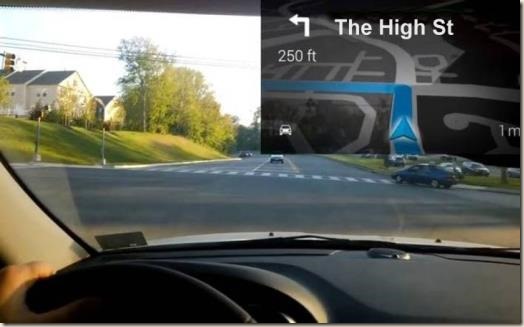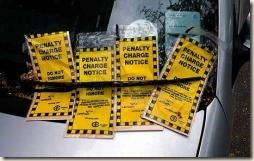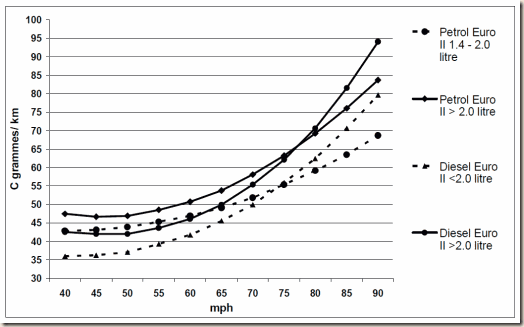Note that this idea by the government has been shelved as of July 2014.
Three years ago, the bunch of vegetables otherwise known as our coalition government were talking about raising the speed limit to 80mph on motorways. Incredibly, they had cited “improved business travel times” as a justification, even though you would only save about 20 minutes if you could travel all the way from London to Liverpool at a steady 80mph.
So it beggars belief that in todays news that they are now talking about reducing motorway speed limits to “cut pollution”. Even more ridiculous is the RAC citing “negative impact on business efficiency” as a downside. The stretch of M1 involved at this stage is 35 miles long, and the reduction would simply mean that it would take 5 minutes longer to travel the distance – even if you could actually do 60mph at all, which during the rush hour you can’t.
I am against such a move on the grounds that it is just an unnecessary change. Pollution is an absolute and direct function of the area in question – since the first time I drove that way aeons ago I have always been struck by the smell drifting across the road as you approach Sheffield. Any pollution is created from within – not by cars on the M1.
It’s also amusing that the report says:
The normal speed limit would still apply to the rest of the M1, which runs from north London to Leeds.
Obviously – and especially combined with the biased attitude of government when it comes to any sort of dealing with Londoners – London doesn’t suffer pollution and so can keep the more sensible 70mph limit. God forbid that we should upset anyone in London, eh?
All of this is a last minute knee-jerk reaction to European legislation which comes into force this year. Instead of dealing with the issue properly, the government has left it to the Highways Agency to pick up the tab (although the Agency is just an extension of the government anyway). I say again, the areas involved – Mansfield, Chesterfield, Sheffield, and Rotherham – are polluted already and always have been. They are polluted because of the industry around them, and not because the M1 passes through.
The same RAC comedian who said it would impact on business significantly is also quoted:
This very powerfully demonstrates the impact that speed has on emissions and many will be surprised to hear that a reduction of just 10mph can have such a significant effect on improving air quality.
Yes, they most certainly would be surprised to hear that. Actually, they’d be surprised to hear that you can go faster than 60mph in the first place, especially during peak hours – where less than 30mph is common. But what about the emissions themselves? Take a look at this document from 2006. On page 2 there is this graph.
The authors of that document (and anyone supporting this change) glibly speak of how many “million tonnes of carbon” will be cut by lopping 10mph of the speed limit. Anything with the word “million” is carefully crafted to sound dramatic. But let’s look a bit closer.
Emissions are calculated from fuel consumption, It’s no more scientific than that, so you can stop imagining a car with lots of wires and special sensors stuck up the tail pipe. A car is at its most efficient when driven at 55mph (published mpg figures always use that speed), and the car is 3% less efficient than this at 60mph and 17% less efficient at 70mph.
Just for the record, it’s 28% less efficient at 80mph – the speed the jackasses were going to up limits to three years ago.
The problem is that mpg figures are always just a starting point. You may well get the published 50mpg (for example) at a steady 55mph, but you are unlikely to be able to maintain a steady 55mph under day-to-day driving conditions. Much of the time you will be stationary – how do you convert that to mpg when your engine is still running? Well, you don’t. You just accept that the average mpg will be less than the theoretical published figure as a result.
Referring back to the graph, above, there is another problem. It’s all very well talking about the emissions per se when the scope is the entire world, but as soon as you cut that scope to a smaller area, such as a county – or a specific 35-mile stretch of road – the transit time becomes significant. In other words, you don’t get the full advantage of the reduced emissions by dropping traffic speed, because said traffic will be there for longer as a result, which pushes the emissions the other way again.
Let me try and illustrate this in a different way, because some people seem unable to grasp the importance of transit time in the proposal.
A car travelling at a fixed speed of 70mph will burn fuel less efficiently than one travelling at a fixed speed of 60mph. If you just talk in terms of overall emissions (i.e. pollution in general) then 60mph is obviously better. However, as soon as you start talking about driving and pollution inside a specific 35-mile long bubble – as the government is doing in order to reduce measured pollution within that bubble – you have to consider the length of time you are in in it.
Imagine that you have a large balloon – one that is 35 miles across – and you are measuring the pollution level inside it. If you have a car on a rolling road driving at 70mph, and you put it inside the balloon for 30 minutes (the length of time it takes to drive 35 miles at 70mph), then it will produce a certain amount of pollution. If you repeat this with another car, but this time driving at 60mph, then you will measure about 12-14% less pollution over 30 minutes. However, if you left the 60mph car inside the balloon for an extra 5 minutes (that’s how much longer it takes to travel 35 miles at 60mph) then it would produce 15% more pollution than it did in just 30 minutes. It’s quite simple: it was inside the balloon for 15% longer.
Relating this back to some real figures, the graph shows that 70mph corresponds to emissions of about 58 gC/km (grammes of carbon per kilometre), and 60mph to 51 gC/km at 60mph. This 12% reduction is equivalent to around 0.4kg less “carbon” emissions per km, and the greenies are obviously all over it.
But using figures from the graph, at 70mph a typical car would produce 3.27kg of “carbon” over that fixed 35-mile range. At 60mph, this would be 2.87kg. But since the 60mph car would be in the range for 5 minutes (15%) longer than the 70mph one, the emissions are emitted for 15% longer – which takes the figure back up to 3.3kg of carbon! It’s a tricky calculation to do, and difficult to get your head around, but it is arguable that a car which is 14% more efficient than another (i.e. the difference between mpg at 60 and 70mph), but which is there for 15% longer than that other (i.e. travelling through a range for which pollution is specifically being monitored) is actually worse than the other as far as emissions are concerned in the enclosed range in question.
In the case of the figures in the above graph, the extra 5 minutes means that the car travelling at 60mph will produce just as much carbon as the one travelling at 70mph within the 35-mile range (technically, slightly more). Of course, stationary traffic would really mess up the figures for you. And the real situation is immeasurably for complicated, with air currents and atmospheric conditions, not to mention volume of traffic, road closures and tail backs, and so on.
I stress that this is very approximate, but it illustrates the point that reducing speed limits to 60mph is a massive red herring – especially when you consider that they wanted to increase it to 80mph three years ago.



 you got 2 hours for 50p (later, £1) people were passing them on to each other if they had excess time left. The council didn’t like this one bit, and it introduced new machines where you have to type in the numerical digits of your car’s registration plate just to prevent tickets being transferred.
you got 2 hours for 50p (later, £1) people were passing them on to each other if they had excess time left. The council didn’t like this one bit, and it introduced new machines where you have to type in the numerical digits of your car’s registration plate just to prevent tickets being transferred.
 card reader. It has been a real boon, and has saved me a lot of money in various ways. In an earlier article, I explained how I nearly went for the
card reader. It has been a real boon, and has saved me a lot of money in various ways. In an earlier article, I explained how I nearly went for the 
 lanes, surrounded by a group of middle-aged men riding two or three abreast and travelling at low speed. The rider of the recumbent usually has a beard and legs that look like something out of a toothpaste tube. All of them are trying to act as if they were 20 years younger.
lanes, surrounded by a group of middle-aged men riding two or three abreast and travelling at low speed. The rider of the recumbent usually has a beard and legs that look like something out of a toothpaste tube. All of them are trying to act as if they were 20 years younger.